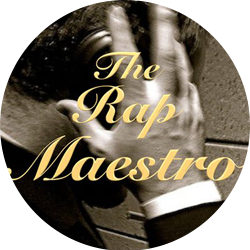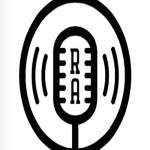After having dealt with how jazz has influenced rap in a general sense, I’ll now mention the specific, strictly musical aspects that these two types of music definitively do share.
The first is something known as “playing behind the beat.” This means that a musician plays their notes slightly later than the actual felt beat of the music. It is a very small delay, though, so it doesn’t feel like a shorter duration length of note. Instead, it’s simply expressive. In rap, you have to have a very discerning ear to hear it, but a pretty clear example is Mos Def’s verse on “RE: Definition:”:
https://www.youtube.com/watch?v=fr6SrRQnZv4
The most obvious one is at 2:10, on the “-ssem-“ syllable of “assemble it.” That syllable “-ssem-“ is still accented heavily, and it feelslike it’s on the beat, not syncopated like the word “did” back in his line “Like Moby Dick did Ahab.” But he’s actually way after it, to an almost startling extent.
This expressive delay also happens at 1:52, on the “sti” of “Palestinians”; The word “day”, at 2:00; The “syn” of “synonym” and the “fem” of “feminine”; and even others.
Compare this to a video of Miles Davis’ solo on “Freddie Freeloader”:
https://www.youtube.com/watch?v=14zAa_PBfRI
It has the notated music in the video. But, actually, that sheet music (note that it is Western music notation) is all wrong. Those notes that are written down don’t actually fall on the beat, as the notes indicate; they fall way after, as you can hear.
This is something African drumming music, and jazz, does a lot as well.
Another thing people will compare between rap and jazz or African drumming music is “polyrhythms.” But, just like jazz is being used to justify rap, “polyrhythms” isn’t really the right word, if they want to make the comparison such a commentator thinks they’re making. Polyrhythms is when more than one rhythm is being played at the same time, and since a rapper can only say one note (or word) at a time, it’s hard to see how they could ever make polyrhythms.
Instead, what I really think such commentators are alluding to is the fact that rappers can touch on many different metric divisions of the beat, all in a short span of time.
For instance, a polyrhythm, such as that from Western African drumming music, might be one where 1 drummer plays 3 notes in the same time duration during which another drummer plays 2 notes. This is what that sounds like:
https://www.youtube.com/watch?v=A8tKbd91kFA
And if rappers are using polyrhythms, they could, at most, only be switching between alluding to that level of 2 notes at a time, and alluding to that level of 3 notes at a time. But again, I’d maintain this isn’t a polyrhythm, but complex rhythmic subdivisions of the beat, since the rapper is only saying one note at a time. That is, they aren’t thinking bottom up (add 3 notes together, then 2 notes, etc.); they are thinking top down (divide the beat/bar however I want.) This doesn’t reflect how the rapper is consciously thinking at the time they are making their rap, but the different musical traditions they are working with (classical, which would be bottom up, vs. jazz/African traditions, which is top down.)
At a much more complex level, this is what Kweli is doing in that same notation from “RE: DEFinition” that we looked at last week. As a reminder, this is it:


You can hear that song here:
https://www.youtube.com/watch?v=fr6SrRQnZv4
To help you understand those rhythms, I’ve isolated them and had them played back by a simple triangle:
https://www.youtube.com/watch?v=DICLoafxSag
For a while I have been notating rap rhythms exactly as they sound — behind the beat, all of these complex rhythmic subdivisions — while other people simplify them. When you simplify them into straight notes, you lose much of what I’m talking about: rapping behind the beat, displaced accents, complex subdivisions. But if you look at that notation from Kweli, you will see all of it. In order to see the complex subdivisions I’ve just been talking about, compare how many different note lengths there are. Sometimes this, (called a sixteenth note), as on the first instance of the word “is”:

Sometimes there is this other length of a note (called a dotted sixteenth note), as on the word “so”:

Sometimes there is still different length, that of the dotted 32nd note:


Unlike Kweli’s music, here, there is 1 length of notes: a quarter note. This is a great, physical example of the difference between Western music and African-influenced musics (like jazz or the blues.)
If you liked this article, you might enjoy these other ones, which are among my most popular:
1.) An analysis of Nas’ flow on the 2006 Busta Rhymes song “Don’t Get Carried Away,” which you can read here.
2.) My album review & analysis of the 2012 Kendrick Lamar album “good kid, m.A.A.d city,” which you can read here.
3.) A database of who the 23 most repetitive rappers in the industry are, available here.
4.) A study of every instrument Dr. Dre used on his songs between the years 2000 and 2009, online here.
5.) A breakdown of Eminem’s song “Business,” which you can check out here.


 Join the weekly RapAnalysis newsletter at
Join the weekly RapAnalysis newsletter at
Beethoven was a genius, the Kweli wasn't.
In all actuality, I'm sure you know/knew either. For ball you know Beethoven didn't exist and Francis Shakespeare wrote his music. Talib Kweli is a genius, activist etc. In fact with the proliferation of available knowledge on a comparable basis in consideration with the expanded of population comparing Beethoven's era with that of the present day one can deduce there are many many more geniuses than ever before, causing a lot of them to never appear on your radr. In fact why should any of them.
Interesting post. The rhythms in rap are cool to analyze how the words and syllables have varying length. It allows for more individual creativity with how the rap is performed.
Thanks man! I have some other stuff on Talib Kweli, so if you're a big fan, just hit me up at [email protected] I also did an interview with him here:
http://www.rapanalysis.com/2013/06/talib-kweli-interview.html
And have another article on him here:
http://genius.com/posts/1762-Rapper-s-flow-encyclopedia-talib-kweli
Like I said, thanks a lot for your comment. It's nice to see my page views go up, but it's even better to hear from real humans; it keeps me even more motivated to keep doing what I'm doing.
Thanks bro! Peace!
-Martin
The break down of music is so intense from you man. you're on a WHOLE different level from ALL the stuff I've seen when relating to rap. You are some kind of musical genius when it comes to this stuff. I found your post on Kendrick Lamar on Rap genius which was pretty hard to follow since I don't much about music, but I managed to get through it, but it was like running up a hill, I broke a sweat. then I read your article on the flows of Kanye, Mos Def, Andrea 3K, & Eminem & it blew me away. It brought a whole new light onto my perception of music. I'm only 21 & I really didn't pay attention to flow when it came to rap. Just the feeling it gave me. Even when writing raps for fun I never really payed attention, just want it to rhyme. But after reading all this stuff it has really inspired me to be better at writing it, & even have a better appreciation for real talent, versus just people simply rhyming on a beat;
Sure man! Glad you liked it so much, and I really liked that you could say WHY you liked it so much 🙂 Definitely keeps me even more motivated to keep doing what I'm doing.
Anyway, if you're a big fan of Kendrick Lamar and Kanye/Mos Def/Andre 3000/Eminem, I'd be happy to hook you up with some articles that I keep stowed away for my biggest fans. Just hit me up at [email protected], and I'll hook you up for sure. They are from a book I'm coming out with next year, so they are some of my best stuff 🙂 if I do say so myself! haha
Anyway, hope to hear from you bro. Thanks again 🙂 And I'll check out your music too if you want!
Peace,
Martin
Totally agree with these two similarities. I've been thinking about this exact subject for a while. What do you think of these possible similarities?
Swing feel – tons of rappers have it but interesting that it fit in well with jazz samples in 90s East Coast stuff – Big L, say.
Syncopated phrasing on 1- and 2-bar scales. E.g. the "2:3 clave"-based phrasing in 0:16-0:27 of Gang Starr's B.Y.S.
Virtuotistic changes of context – e.g. Charlie Parker interweaving classical quotes with blues calls; or Nas switching context from the listener's tape deck to the whole city of New York before the final chorus in NY State of Mind… reflecting an improvisational aesthetic that celebrates instantaneous lateral thinking/wit.
Oh and check this crazy shit: 1948 jive talk from Louis Jordan (elected top jazz saxophonist in Downbeat magazine in his heyday). Definitely not rap, but definitely strangely close to it! https://www.youtube.com/watch?v=ibQ-K9BbHcI
All the best,
Kevin Higgins
Awesome man! Thanks so much for bringing my attention to all that stuff, eventually the BYS song from Gang Starr. That rhythm from Primo is so angular, but somehow still works…could only happen in rap!
I got another article on jazz and rap that I think you might really enjoy, so I put it on Dropbox for free for you to have. It'll be in my book next year, but I really appreciate you writing, so I wanted to show you that 🙂 You can get it here:
https://www.dropbox.com/s/7vjny4ke8n0skwh/What%20Does%20Jazz%20Mean%20In%20Rap%3F%20First%20Half.docx?dl=0
Enjoy man! And hit me up at [email protected] if you want more stuff like this, later bro!
Peace,
Martin
Cool, nice one!
Martin, your work is just amazing, but I was really sad that you didn't write something about bizzy bone. In quick words, what do you think about him? Is he really unique and deserve to be among the greatest rappers of all time or the rapping/singing thing isn't that complex?
Again, thanks for such a great blog.
Hey man! Thanks a lot for writing to me. I really appreciate your compliments, I'd love to let you know what I think about Bizzy Bone. Do you want to give me your favorite song from him and I'll get back to you with my thoughts on it? If you email me at [email protected] it'll be much easier for me, I don't always get notifications when people post here, so it's easier to keep up there. Thanks again man! I think he's pretty good, in short, but to be honest, I need to know his stuff more, haha.
Peace man!
-Martin
I came across your article and sincerely appreciate the level of analysis historical context and examples you introduce. I was having a conversation about Kweli's rhyme style and flow on a podcast last week. While I believe there are many rappers who use unusual or "offbeat" flows as a signature style, I wouldn't necessarily count Kweli among those ranks. To me it sounds, in verses such as the one you cite above, that he has forced too many words into the space without delivering them in a manner that is in sync with or even compliments and counters the beat — IMO.
However, what would be helpful is if you could point out an example of a rapper going offbeat where you believe it was not a stylistic choice, but simply the MC losing the beat. Perhaps that comparison will make me see the contrasts between my perception and your explanation of Kweli's delivery
Again, great article. I'll definitely be back to read more.
peace.
JC
Hey bro, I thought I got back to you on this, my bad! Could you email me at [email protected], where I can try and give you an example of a rapper going off the beat, where it wasn't a stylistic choice? I don't always get notifications from comments here, and kind of lose them easily 🙁 haha, anyway, hope to hear from you soon! Peace JC!
-Martin
"For a while I have been notating rap rhythms exactly as they sound — behind the beat, all of these complex rhythmic subdivisions — while other people simplify them. When you simplify them into straight notes, you lose much of what I’m talking about: rapping behind the beat, displaced accents, complex subdivisions. But if you look at that notation from Kweli, you will see all of it."
What you're going after is transcribing the particulars of how vocalists realize an expressive… "agogic rubato," as not to step into the multiple implications with terms of swing and flow, but without presenting the baseline rhythms to compare it to. What use is it to just show swaths of unrealistic rhythms? I would think it's more sensible to have the baseline rhythms with some kind of analytical late/early markings since that is of note.
And you even have some obvious transcription errors like bar lines, and "by the mad emcee who think" with all syllables marked as same duration for example. I've overlapped your youtube demo to the excerpt from the song both played half speed to show to you the full extent of which you're off: https://instaud.io/jtW
If you can afford Sibelius, then certainly you can afford a DAW which you can manipulate audio and align it to a time grid so you can do proper transcription work, especially when there are free ones capable of it.
Not trying to be mean, you can do better and I hope to see improvements.
It is so nice post. I am attracted because of your writing.
Thanks Marry! If you want more writings, hit me up at mepc36@gmail, and I'll tell you all about my book 🙂
Best,
Martin
Dude Did you help VOX with the new video they made?
Yeah man! Did you like it? I hope so! If you hit me up at [email protected] I'll hook you up with anything you want! Peace man! -Martin
All this analysis of jazz in hip-hop reminds me of the song "What'd I Miss?" from the Broadway hip-hopera/musical Hamilton. Come to think about it, the entire musical is rich of fantastic rhythmic raps and the music itself is beautiful and complex. I'd love to read your opinion and analysis of the music of Hamilton.
Yeah, I actually have the album of the Hamilton musical, and have listened to it a few times, but don't have it memorized word for word yet, which is usually the only point at which I feel comfortable writing a full review for the public. If you hit me up at [email protected] though, I'll give you my own thoughts on it personally. I love that song! But Hamilton is a good "problem" Hip Hop needs to deal with right now…why has it not yet influenced any ACTUAL rapper, like Kanye, Drake, etc? Hit me up and we can talk about that Neifert! Thanks!
Peace,
Martin
Hey, Martin
I think that rapping polyrhythmically is possible, but you have to look at the different tones that an emcee uses vocally to distinguish between the two "drums." Also, the polyrhythm exists in the approach; a rapper spitting in triplicates over a 4/4 beat.
>also, the polyrhythm exists in the approach; a rapper spitting in triplicates over a 4/4 beat.
Exactly! That's why Krims' characterization of rap's rhythms as "polyrhythms" was really like nails on a chalk board; 2 different instruments (rapper and beat) played over each other isn't a polyrhythm, that's just music! lol. Yeah, I call Nas' rhythms on his featured verse on Busta Rhymes' 2006 song "Don't Get Carried Away" polyrhythms in that expanded sense, as he chops up the 4/4 beat behind him into a (2+3+3)/(8) time signature:
http://www.rapanalysis.com/2011/03/how-to-appreciate-rap-music-3-is-nas.html
Let me know what you think!
Peace bro!
Best,
Martin
P.S. – I keep up with email way more than the comments section here, so if you want to keep talking, hit me at [email protected]. Thanks bro! Hope to hear from you.